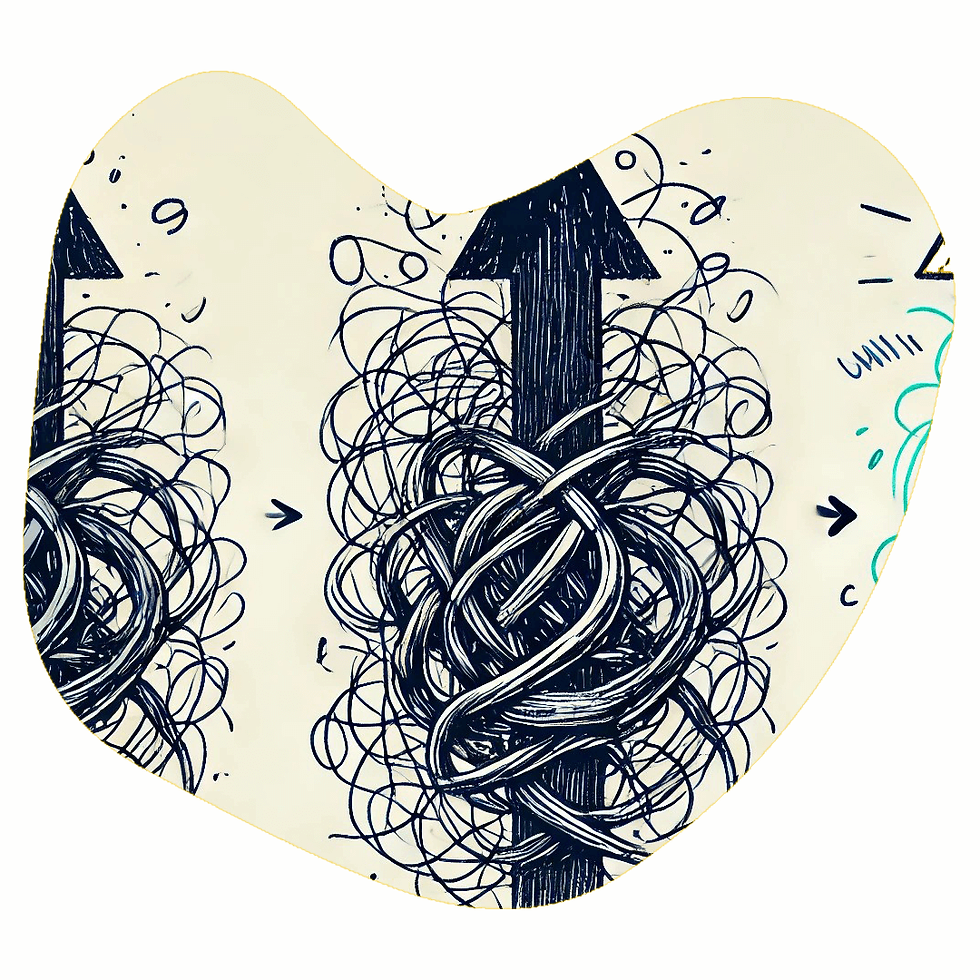Affordable Creativity: Crafting Big Ideas on a Small Budget
- The Falafel Theory Team

- Oct 22, 2024
- 3 min read
Updated: Sep 15
Imagine standing in front of a blank canvas with only a few basic colors at your disposal. To some this might seem limiting, but to the creative mind it's an invitation to innovate—to mix hues, experiment with strokes, and ultimately produce a masterpiece. This is the essence of affordable creativity: transforming limitations into opportunities for brilliance.

In a society that often equates quality with high cost, we can easily fall into the trap of believing that significant achievements require substantial investments. The Falafel Theory challenges this notion by demonstrating that creativity doesn't have to be expensive to be impactful.
The Myth of "More Money, Better Solutions"
It's a common belief that bigger budgets yield better results. While resources can enhance capabilities, they aren't the sole determinants of success. In fact, constraints can ignite creativity by forcing us to think differently and find novel solutions.
Embracing Affordable Creativity
Affordable creativity is about maximizing impact with minimal resources. It's the art of doing more with less—finding ingenious ways to overcome challenges without relying on hefty budgets.
Principles of Affordable Creativity:
Resourcefulness: Utilizing what's available in new and unexpected ways.
Innovation through Constraints: Letting limitations inspire unique solutions.
Focus on Essentials: Prioritizing core elements that deliver the most value.
The Falafel as a Symbol of Affordable Creativity
The falafel, made from simple ingredients like chickpeas, herbs, and spices, exemplifies how basic components can create something delightful and nourishing. It doesn't require exotic ingredients or elaborate preparation, yet it satisfies and sustains millions.
Similarly, when we apply affordable creativity, we create solutions that are:
Accessible: More people can implement and benefit from them.
Scalable: Easier to reproduce without significant costs.
Sustainable: Less resource-intensive and often environmentally friendly.
Stories of Big Ideas on Small Budgets
1. The Cardboard Classroom Desk
In rural India, a design firm created a foldable desk out of recycled cardboard for children who lacked proper school furniture. The desks cost less than $0.20 to produce and doubled as school bags. This simple, affordable solution significantly improved the learning experience for thousands of students.
2. The Bottle Light
A Brazilian mechanic invented a way to illuminate dark homes in impoverished areas by inserting plastic bottles filled with water and bleach into roofs. The refracted sunlight provided the equivalent of a 55-watt bulb during the day, at virtually no cost.
3. The $300 House
A proposal emerged to design ultra-low-cost housing for the homeless, using inexpensive materials and community labor. The idea sparked global discussions on affordable housing solutions, demonstrating that impactful ideas don't require massive funding to start.
How to Cultivate Affordable Creativity
1. Redefine Constraints as Opportunities
Challenge Assumptions: Question the belief that more resources are always needed.
Embrace Limitations: Use constraints to drive innovation rather than hinder it.
2. Leverage Collective Intelligence
Collaborate: Pool skills and knowledge with others to compensate for limited resources.
Crowdsource Ideas: Engage communities or online platforms to gather diverse perspectives.
3. Repurpose and Reuse
Upcycle Materials: Transform discarded items into valuable components.
Adapt Existing Solutions: Modify what already exists to suit new purposes.
4. Simplify Design
Focus on Functionality: Prioritize features that are essential to the solution's effectiveness.
Eliminate Excess: Remove unnecessary elements that add cost without adding value.
Inspiring Action Through Affordable Creativity
Consider a challenge you're facing that seems insurmountable due to budget constraints. Now, flip the script. Ask yourself: How can I achieve my goal using only the resources I currently have?
This shift in mindset opens up new avenues for innovation.
Steps to Get Started
Identify Available Resources: Make an inventory of materials, skills, and networks you can tap into.
Brainstorm Alternatives: Think creatively about how to use these resources in unconventional ways.
Prototype Quickly: Create a simple version of your solution to test its viability.
Seek Feedback: Share your idea with others to refine and improve it.
Remember, constraints are not roadblocks—they are catalysts for creativity.
Conclusion: Your Creativity Can Change the World
Affordable creativity isn't about settling for less; it's about unlocking potential in unexpected places. By embracing this approach, you not only overcome resource limitations but also contribute to a culture of sustainability and inclusivity.
Your big ideas deserve to see the light of day, regardless of your budget. With ingenuity and determination, you can craft solutions that make a real difference.




Comments